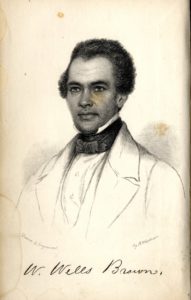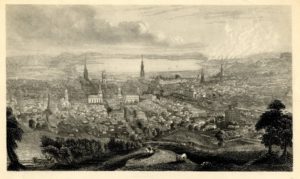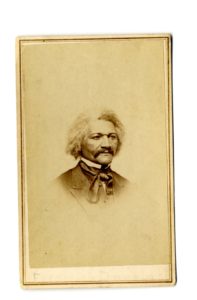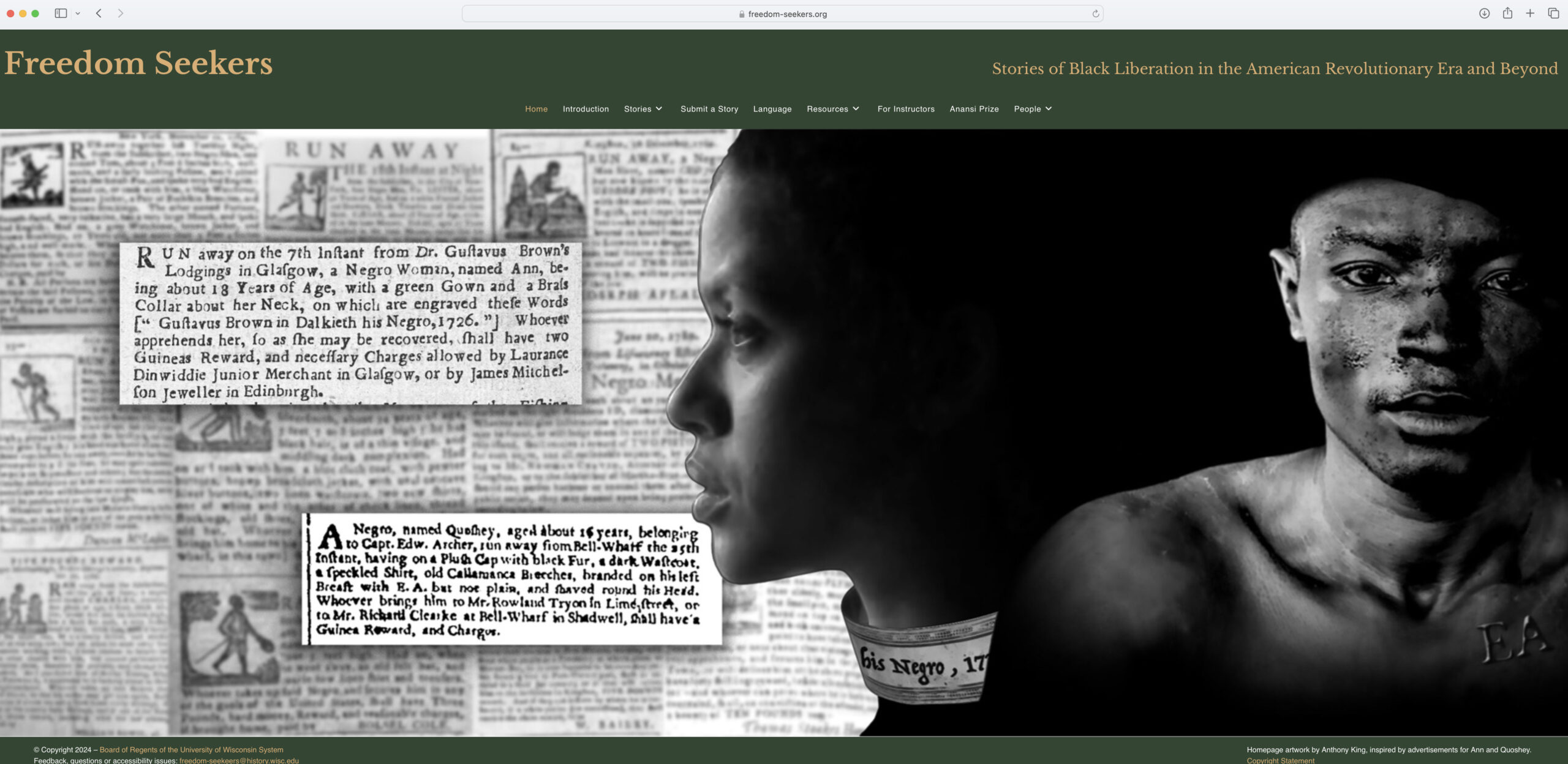If ever America undergoes great revolutions, they will be brought about by the presence of the black race on the soil of the United States; that is to say, they will owe their origin, not to the equality, but to the inequality of condition. (De Toqueville, Democracy in America, Book II, 1840)
In the weeks leading up to the pivotal presidential election of 1864, 140 abolitionists from seventeen states, including numerous slave states, met in the Wesleyan Methodist Church in Syracuse, N.Y., to discuss what one delegate called the end of the “long dark night of sorrow” and the “morning’s dawn” of a new meaning of freedom in America. Many of the speeches delivered over the course of four days in Syracuse focused on questions of “equal opportunities and equal rights.” We have “been subdued, not by the power of ideas, but by brute force, and have been unjustly deprived not only of many of our natural rights, but debarred the privileges and advantages freely accorded to other men,” read a portion of the declaration of wrongs and rights, a “strong document” according to the Liberator, “drawn with point and terseness.” Delegates demanded, among other things, the right of suffrage, equal access to education, equal pay for black soldiers, the ability to serve on juries and the immediate end of slavery. Referencing the profound service of black troops in the Union war effort, one delegate maintained that “Wagner, Hudson, Petersburg, and all the other battles of this war, have not been fought in vain.” For Frederick Douglass, the most famous abolitionist in America and the president of the convention, the delegates were gathered “to promote the freedom, progress, elevation, and perfect enfranchisement, of the entire colored people of the United States.” As historian David Cecelski has noted, the declaration made at Syracuse was the “philosophical underpinning for the black freedom struggle.”
For years, I have framed my classroom discussion of Reconstruction by guiding students through a transcript of a meeting of black religious leaders with Union General William T. Sherman in Savannah, Ga. It is in many ways a remarkable document, detailing responses to large and momentous questions: What did the Emancipation Proclamation mean? How could the government assist freedmen? What did freedom even mean? For the black minister Garrison Frazier, freedom entailed “taking” slaves from the “yoke of bondage” and placing them where they “could reap the fruit” of their “own labor.”
Recently, however, an invitation to write a piece on Reconstruction for the New York Times digital series on the Civil War era forced me to rethink my reliance on the Savannah meeting as a complete framework for the unit. I realized that in order to help my students fully understand how black abolitionists in the North thought about the meaning of the Civil War, I needed to engage some issues that were not raised in Savannah and to explore how other black leaders defined freedom. The deliberations at the Syracuse Convention gave the class a wider window into the civil rights movement in the nineteenth century. An ongoing digital history project at the University of Delaware on nineteenth-century black conventions provided easy access to a complete transcript, along with dozens of other black conventions.
My students enjoyed the experience of researching the lives of the Syracuse delegates on blackpast.org. Though the vast majority of delegates were male, Edmonia Highgate and Frances Ellen Watkins Harper also played roles at the convention, though unfortunately the texts of their remarks have not survived. Among those in attendance at Syracuse were Frederick Douglass, William Wells Brown, John Sella Martin, James W. C. Pennington, Abraham Galloway, and Jermain Loguen, all of whom had escaped from the upper South and later became active conductors on the underground railroad. Brown, Pennington, Douglass, and Loguen all wrote best-selling narratives, detailing their time in bondage and their escape to freedom. In addition to helping fugitive slaves, these men were at the forefront of the civil rights movement. Before the Civil War, Pennington helped to found the Legal Rights League in New York to battle racial segregation. Douglass and Brown, along with New York delegate Henry Highland Garnet, Rhode Island delegate George T. Downing, and Ohio delegate John Mercer Langston, participated in efforts to recruit black soldiers for the Union Army. In his speech at the convention, Garnet referenced the 1863 draft riots in New York City and the “demoniac” anti-black violence that gripped the city over service in the military. My students were able to research this large urban riot on blackpast.org, along with the activities of various benevolent organizations mentioned at the convention, including the African Civilization Society and the National Freedmen’s Relief Association.
A convention speech by John Mercer Langston afforded me the opportunity to introduce the class to U.S. Attorney General Edward Bates’s November 1862 ruling on citizenship. At Syracuse, Langston, a trained attorney, highlighted the equality principles of Jefferson’s 1776 Declaration and then summarized Bates’s ruling for the audience. Bates dismantled Chief Justice Roger Taney’s decision in Dred Scott v. Sanford (1857). The Constitution, declared Bates, said not “one word, and furnishes not one hint, in relation to the color or to the ancestral race” of citizens. Every person born free on American soil was, according to Bates, “at the moment of birth, prima facie a citizen” of the United States. Langston’s speech allowed me to revisit the story of the 1863 Emancipation Proclamation using some of historian James Oakes’s scholarship. Bates’s opinion meant that freed slaves were indeed “free persons” as understood by the Constitution and, most importantly, they were to be afforded the privileges and immunities of citizenship.
The fruits of decades of black activism can be seen in Bates’s groundbreaking decision. For example, in 1842, black activists, along with their white allies in the Whig party, led a successful effort to strike the word “white” from the Rhode Island constitution. Throughout the pre-Civil War era, African Americans led drives to desegregate schools, to end segregated travel on street cars in major cities, and to gain access to public accommodations. As historian James M. McPherson noted long ago, northern freedom fighters “could not hope to revolutionize the southern social order without first improving the status of Northern” blacks. George Downing, president of the 1859 New England Regional Convention, and fellow Rhode Islander James Jefferson, were major contributors to the Syracuse Convention and worked tirelessly to end segregation in public schools. As historian Kyle Volk has recently documented in a path-breaking book, black-led organizations sought to break the color barrier through petitioning campaigns, lobbying efforts and legal battles in the 1840s, ’50s, ’60s. My students are often surprised to learn that the civil rights activism that they associate with the NAACP in the twentieth century was part of the pre-Civil War era.
On discussion boards, my students explored the powerful “Declaration of Wrongs and Rights” produced at the end of the Syracuse Convention. They noticed its structural similarities to the Declaration of Independence and compared it to abolitionist texts we had already studied, such as Angelina Grimké’s 1836 “Appeal to the Christian Women of the South,” Douglass’s 1845 autobiography, and Douglass’s famous 1846 letter to Garrison, which was immortalized by Ken Burns in his film on the Civil War. “When I remember that with the waters of her noblest rivers, the tears of my brethren are borne to the ocean, disregarded and forgotten, and that her most fertile fields drink daily of the warm blood of my outraged sisters, I am filled with unutterable loathing,” wrote Douglass to Garrison.
Another thread in the students’ discussion focused on their observation that the debate in Syracuse was not simply an abstract, intellectual exercise on the meaning of citizenship, but a powerful conversation about American slavery, a “loathing” of a system that had destroyed the lives of millions of black Americans since the founding of the nation. Many of the delegates had been born into slavery in the South and it was their experiences that informed the construction of the declarations of “wrongs.” The text of the fourth “wrong” provided a wonderful opportunity for students to revisit what Douglass labeled the “dark night” of American slavery, a large topic in the fall term:
As a people, we have been denied the ownership of our bodies, our wives, homes, children, and the products of our own labor; we have been compelled, under pain of death, to submit to wrongs deeper and darker than the earth ever witnessed in the case of any other people; we have been forced into silence and inaction in full presence of the infernal spectacle of our sons groaning under the lash, our daughters ravished, our wives violated, and our firesides desolated, while we ourselves have been led to the shambles and sold like beasts of the field.
The subsequent statement of “rights,” which opened with a reference to all men being born “free and equal,” contained four sections. The delegates chastised all attempts to colonize them outside of the U.S. and demanded that land taken from rebel slaveholders be redistributed to slaves. Finally, the delegates desired to see the “immunities and privileges” of citizenship afforded to them.
At the end of the convention, Frederick Douglass was asked to draft an address to the nation that would reach a wider audience. Douglass drew from many of the themes he had put forth in his widely circulated wartime speeches, especially his December 1863 address to the American Anti-Slavery Society. In this jeremiad, “Our Work Is Not Done,” Douglass maintained that “mightier work than the abolition of slavery now looms” before the country. A true “abolition peace,” according to Douglass, had to include emancipation and civil and political equality for black Americans. Douglass declared in October 1864 that he was committed to the “right path”—emancipation and civil rights. Douglass understood that the “Slave Power” had yet to be completely vanquished, but he also feared the “shadow of slavery,” a reference to northern racism, which he believed was embodied in the ranks of the Republican party. “We may survive the arrows of the known negro-haters of our country,” wrote Douglass, “but woe to the colored race when the champions fail to demand, for any reason, equal liberty in every respect.”
Douglass had been fiercely critical of President Abraham Lincoln for months and in his speech in Syracuse he made it clear that though Union victory seemed near, there were still no firm guarantees about what a reconstructed union would look like. Douglass issued a stark warning to the Republicans: “make sure of the friendship of the slaves; for, depend upon it, your Government cannot afford to encounter the enmity of both.” In the end, Douglass maintained that the “change” in the conception of freedom that had been ushered in by the progress of the war and the Emancipation Proclamation was “great and increasing.” Douglass hoped to merge the cause of black equality with national renewal.
After the Syracuse Convention, the newly created National Equal Rights League (NERL) took up the fight “to obtain by appeals to the minds and conscience of the American people, or by legal process when possible, a recognition of the rights of the colored people of the nation as American citizens.” Under Langston’s leadership, the NERL, which was headquartered in Philadelphia, began to oversee local branches across the North and in parts of the South that were under federal military control. The Pennsylvania Equal Rights League, perhaps the most well-known of the auxiliary organizations and well-documented by historian Hugh Davis, published a constitution in early 1865. The convention in Harrisburg, Pa., adopted a bold resolution: “As the nation has cast off slavery, let them destroy restrictions which prevent colored people from entries to libraries, colleges, lecture rooms, military academies, jury boxes, churches, theatres, street cars and from voting.” In May 1865, Octavius Catto, a delegate to the Syracuse convention and active member of the NERL, initiated a sit-in to desegregate streetcars in Philadelphia. After a driver unhitched the car that Catto had boarded in an attempt to prevent the black activist from riding, Catto simply sat down and stayed in the car until the next morning when he was joined by other black passengers who desired to be taken to work. In 1871, Catto was gunned down in broad daylight as he attempted to take part in an election. The white shooter was acquitted on all charges.
Four years after Catto’s murder, the prominent Massachusetts Republican Senator Charles Sumner helped to orchestrate the passage of a far-reaching civil rights bill that built on the agenda of the NERL. American citizens, the 1875 Civil Rights Act declared, were entitled “to the full and equal enjoyment of the accommodations, advantages, facilities, and privileges of inns, public conveyances on land or water, theaters, and other places of public amusement.” During the lengthy debate on Sumner’s bill, a contentious battle was waged in Congress over whether or not the federal government had the power to prevent acts of discrimination committed by private businesses and individuals. In order to trigger the Fourteenth Amendment, there had to be some type of state action. Was private discrimination by a theater owner, for example, permissible? Syracuse delegate George Downing certainly did not think so. “If an inn” has its “right to exist by virtue of state authority” and is “regulated by it,” he argued, it “may be said that the state does the discriminating.”
The U.S. Supreme Court did not follow Downing’s line of reasoning. In 1883, the justices declared the 1875 statute unconstitutional. The justices viewed privately owned theaters and restaurants as outside of the bounds of state action. Discrimination by owners simply constituted private wrongs that the national government was powerless to correct. In his final autobiography, Frederick Douglass maintained that “future historians will turn to the year 1883 to find the most flagrant example” of “national deterioration.” Though Sumner’s bill was ultimately nullified by a court and indeed by an indifferent nation, the spirit of the law lived on. It was up to modern civil rights leaders and activists to carry on the work that had come out of the Syracuse Convention. The steadfast efforts of the NAACP, the successor organization to the NERL, eventually led to the passage of a civil rights bill that the nation could not ignore.
The author dedicates this article to his students at the Lawrenceville School.
Further Reading:
Thanks to editor Darcy Fryer, this is the third essay I have been able to write on the meaning of freedom in the Civil War era for Common-place (Part I & Part II). In preparing to write the end of the trilogy, I re-read historian James M. McPherson’s invaluable 1964 work, The Struggle for Equality, along with his 1965 book, The Negro’s Civil War. The Genius of Freedom website sponsored by the Library Company of Philadelphia is a wonderful classroom teaching tool. I benefited from reading Kyle G. Volk’s Moral Minorities and the Making of American Democracy (Oxford, 2014). Hugh Davis’s ‘We Will be Satisfied with Nothing Less’: The African American Struggle for Equal Rights in the North During Reconstruction (Ithaca, 2011) and Douglas R. Egerton’s The Wars of Reconstruction: The Brief, Violent History of America’s Most Progressive Era (New York, 2014) helped in understanding northern civil rights activism in the Civil War era. Egerton’s Lincoln Prize-winning Thunder at the Gates: The Black Civil War Regiments That Redeemed America (New York, 2016) provided valuable insight into the ways in which black military service was connected to civil rights activism, a topic addressed by Massachusetts lawyer John Rock at the Syracuse Convention. James Oakes’s groundbreaking work, Freedom National: The Destruction of American Slavery, 1861-1865 (New York, 2013), provided insight into the significance of Attorney General Bates’s ruling on the citizenship question. For information on Jermain Loguen see Milton Sernet’s North Star Country (New York, 2001). David Cecelski’s The Fire of Freedom: Abraham Galloway and the Slaves’ Civil War (Chapel Hill, N.C., 2012) is a thoroughly engaging study and provides an excellent overview of the Syracuse Convention. Cecelski’s highly readable book would work well in any undergraduate or advanced high school class. Daniel Biddle and Murray Dubin’s Tasting Freedom (Philadelphia, 2010) is a detailed biography of Octavius Catto. In September 2017 the city of Philadelphia finally erected a statue to commemorate Catto’s career. All students of Frederick Douglass anxiously await the publication of David Blight’s Frederick Douglass: An American Prophet (New York, 2018).
This article originally appeared in issue 18.2 (Spring, 2018).
Erik J. Chaput, PhD, teaches American history at the Lawrenceville School, an independent boarding school in New Jersey, and in the School of Continuing Education at Providence College. He is the author of The People’s Martyr: Thomas Wilson Dorr and His 1842 Rhode Island Rebellion (2013).
























